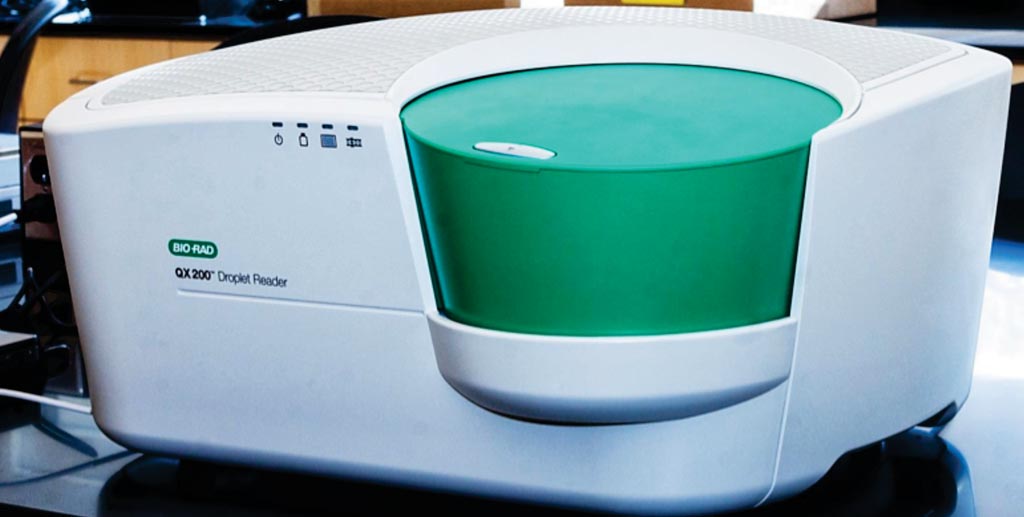Test Detects Cancer Mutations from Circulating DNA
By LabMedica International staff writers
Posted on 30 Aug 2017
In cancer patients, apoptotic and necrotic tumor cells release their DNA content into the blood. This is commonly referred to as circulating tumor DNA (ctDNA); and can be used for DNA sequencing or molecular genotyping assays to identify and quantitatively measure those ctDNA molecules bearing somatic mutations.Posted on 30 Aug 2017
The single-color digital polymerase chain (PCR) test offers several advantages over other methods of circulating tumor DNA analysis, compared to next-generation targeted sequencing and fluorescent probe-based digital PCR assays. The main advantage is that the new technique does not rely on pre-amplification, which can introduce errors and biases.

Image: The QX200 Droplet reader for EvaGreen or probe-based digital PCR applications, for use with the QX200 Droplet Digital System (Photo courtesy of Bio-Rad Laboratories).
Scientists at Stanford University (Palo Alto, CA) obtained blood samples from patients who had undergone diagnostic cancer gene sequencing of his or her colorectal adenocarcinoma or cholangiocarcinoma and had diagnostic cancer mutation reports available at the time of enrollment into the study. The team used a single-color digital PCR assay that detects and quantifies cancer mutations directly from circulating DNA collected from the plasma of cancer patients. This approach relies on a double-stranded DNA intercalator dye and paired allele-specific DNA primer sets to determine an absolute count of both the mutation and wild-type–bearing DNA molecules present in the sample.
Before Droplet Digital PCR (ddPCR), the cell line and formalin-fixed paraffin-embedded (FFPE) genomic DNA samples were treated with an EcoRI restriction digest, and processed. Patient cell-free DNA did not require enzymatic fragmentation given that these samples are already highly fragmented. All ddPCRs were performed using the Bio-Rad EvaGreen QX200 ddPCR system and protocol. After thermal cycling, the plate was transferred and read by the Bio-Rad QX200 Droplet reader.
The cell-free DNA assay uses an input of 1 ng of non-amplified DNA, approximately 300 genome equivalents, and has a molecular limit of detection of three mutation DNA genome-equivalent molecules per assay reaction. After generation of customized mutation detection assays, the investigators were able to identify tumor-derived circulating DNA from three out of six patients. In one patient, the assay was able to show the presence of three different mutations. The three patients, whose samples did not show elevated cancer DNA, were undergoing active treatment at the time of collection.
Hanlee P. Ji, MD, an Associate Professor and lead investigator of the study said, “Molecular tests like the one we have developed will enable patients to be monitored at every visit, and thus have the potential for quickly tracking cancer growth and spread. Moreover, the test's rapid turnaround and relatively low cost, especially compared to next-generation DNA sequencing, provide a potential opportunity for universal monitoring of more patients than is currently done.” The study was published on August 14, 2017, in The Journal of Molecular Diagnostics.














